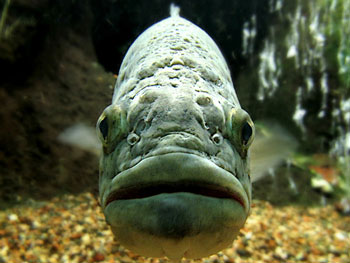The Fishing Season is Here!
May 3, 2011Custom Charters aboard Sheila D with Captain Artie Caissie
May 17, 2011We could write a book, probably a whole series of books, about saltwater fishing knots and fishing knot tying. There are as many saltwater fishing knots as there are fishing enthusiasts, which is why many hobbyists find knots intimidating. But relax! While there are hundreds of saltwater fishing line knots you can learn, there’s no one right way or wrong way to tie a knot and many different fishing line tying techniques will work in many different situations. Consequently, if you know just a handful of versatile saltwater fishing knots, you’ll be covered in almost every circumstance. Here are 10 of the best saltwater fishing knots, along with how to use them:
1. The Albright Knot
Sometimes known as the Albright Special Knot, the Albright knot should be used when you’re joining monofilament lines of unequal diameters – for example, when you’re tying your main line to a shock leader or single strand wire leader. A tight Albright knot is small, giving it an advantage over a barrel swivel. It’s not the easiest saltwater fishing knot to tie, but its diminutive size means it won’t catch on your rod guides.
2. The Blood Knot
This basic twisted knot is used mainly for joining two lines of monofilament that are roughly the same thickness – for example, when joining sections of tippet or leader. It’s a variable strength saltwater fishing knot, with the strength depending on the number of turns made on each side of the center and how short you clip the ends, but it’s also an extremely easy knot to tie.
3. The Improved Clinch Knot
One of the most-used knots in fishing, the clinch knot is a reliable way to secure a line to a hook, lure, or swivel. This strong, variable saltwater fishing knot is an angler favorite and easy to learn. The clinch knot works best in lighter lines, and the improved version includes an extra tuck under that final turn.
4. The Dropper Loop Knot
Also known as a blood loop or a snood loop, this knot creates a loop in your line that stands out at a 90 degree angle so you can attach a second leader or lure. While it does maintain most of your line’s strength, the sharp angle in the line creates points of internal weakness. While you can create a dropper loop long enough to place a hook, this isn’t recommended.
5. The Flemish Eye Knot
This saltwater fishing knot creates a reinforced loop in heavy mono, usually for the purposes of attaching hooks, swivels, and rings to wire. The Flemish Eye requires a sleeve to finish it off, so a crimping tool is required.
6. The Haywire Twist Knot
Connecting single-strand wire leaders to swivels, hooks, and lures is often accomplished with a haywire twist, an extremely strong knot that creates a loop where conventional knots won’t work. Creating this knot requires a two-part twist, and some fishing enthusiasts prefer to use a tool made especially for tying a haywire twist.
7. The Palomar Knot
This simple saltwater fishing knot can be used when you’re attaching a hook or other terminal tackle to your line, and is considered both one of the easiest and one of the most reliable knots. The most difficult part of tying the Palomar knot is passing the loop over the hook or tackle, which can necessitate making the loops larger than you might anticipate needing. Once you get the hang of it, however, it’s one of those knots that can be tied in the dark.
8. The Rapala Knot
Use this non-slip loop knot when you’re attaching a lure to a monofilament leader of less than 150 lb breaking strain. The Rapala is tied directly to the lure and supposedly adds more freedom of movement while holding tightly and maintaining line strength because the structure of the knot transfers the force to the loop itself. For larger mono, a crimped connection is sometimes required.
9. The Snood Knot
Also called the Snell Knot, the snood knot is used to connect a leader to a baited hook and was originally used with eyeless hooks, but has since come into use with other styles of hook. The benefit of the snood knot is that it aligns your fishing line or leader with the shaft of the hook. This is one of the oldest known saltwater fishing knots, and its fans claim it maintains line strength much better than newer knots.
10. The Uni Knot
One of the easiest knots to tie with a breaking strength that is only slightly less than that of the line by itself, the uni knot is quite versatile in that it can be used for multiple applications. Sometimes called a Duncan knot or Grinner knot, this is the knot to know if you can only tie one saltwater fishing knot!

